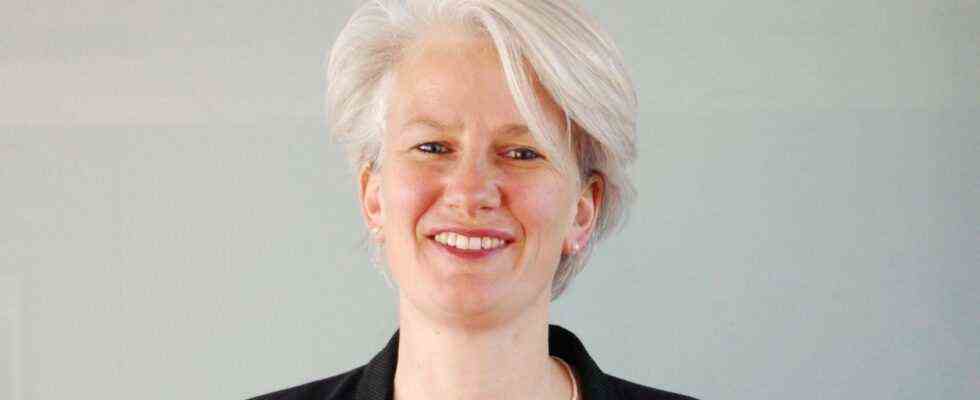There was a time at Airbus when engineers gave up lots of jobs. They just couldn’t go on anymore. 2006 should be the first Airbus A380 to Singapore Airlines, but instead the employees struggled with cables that were too short in the cabin of the giant aircraft and incompatible software programs at the various locations. Long nights worked through were part of everyday life until the problem was more than a year and billions later under control.
Sabine Klauke was a young engineer at the time and was responsible for part of the cabin installation at the Hamburg-Finkenwerder plant. The now 48-year-old persevered in contrast to some of her colleagues at the time and it was obviously worth it. Klauke has been on the Airbus Executive Board as chief technology officer since July; she is the top of 11,000 engineers. In her role she has to prepare nothing less than the future of Airbus. What they and their people develop primarily determines whether the aircraft company can make the urgently needed leap into more sustainable aviation.
“When I started at Airbus, we were working on a Cryo-Plane concept, a hydrogen-powered airliner,” recalls Klauke. “At that time we said that it would take another 20 to 25 years for the technologies to be ready for use. And that is exactly where we are now.” Hydrogen should now actually become one of the main pillars in Airbus’ future concept: In 2035, the group wants to bring an aircraft with such a drive onto the market and thus promote the energy transition.
At the beginning of the year, Airbus presented three concept studies – a regional aircraft, a model that is used in today’s short- and medium-haul jet A320neo very similar and a very futuristic flying wing. But Klauke does not yet want to decide which of the three ideas will be pursued or whether it will be one of the three at all. “We definitely believe that 2035 is realistic. But it is still too early to decide what exactly the hydrogen airplane will look like,” said the technology director.
“We know that there is not only one solution to make aviation sustainable.”
14 years sounds like a long time, but for the kind of technological leap Airbus is now planning, it’s not much. Because never before has a company in the aviation industry tried to switch from the traditional fuel kerosene to a new one. Space is required for a tank in which liquid hydrogen can be transported in a highly cooled manner. It will probably be in the back of the torso. The engines have to be changed, systems and aircraft have to be designed in such a way that the current level of safety can at least be maintained. The hydrogen itself must be produced in large quantities and sustainably, otherwise little is gained in terms of environmental compatibility.
An Airbus A350 1000 at Cardiff Airport, Wales: The industry must become more sustainable – with hydrogen, for example.
(Photo: oh)
And yet it is clear that the conversion with hydrogen alone will not succeed. “We know that there is not just one solution to make aviation sustainable,” says Klauke. “We are looking at liquid hydrogen as a promising solution, but we are also working on sustainable aviation fuels (SAF), which we will need for long-haul routes.” So far, the aircraft can only refuel a mixture of a maximum of 50 percent SAF, the rest has to be conventional kerosene. By the end of the decade, however, it should be possible to only use synthetic or bio-fuel. Depending on how sustainably it was then produced, the carbon dioxide emissions can be drastically reduced.
The European Union has just passed mandatory blending quotas, and the US government wants to support the development of production capacities with billions in aid. So far, sustainable fuels have only been able to cover a tiny fraction of demand and they are still far too expensive. Therefore “we very much welcome the initiatives of the EU and the USA,” says Klauke.
Airbus does not have everything in its own hands; many things have to work together so that aviation can transform itself quickly enough. Andrew Murphy, responsible for aviation at the environmental association Transport and Environment, made it clear at an Airbus technology conference on Wednesday that, in his view, the industry could lose the race against time if it did not act quickly enough. In this case, the matter is simply regulated by demand, i.e. the number of flights is limited by guidelines or by price.
That is why Klauke’s engineers are not only concerned with visions of the future. On Wednesday, for example, they presented the first finished prototype of the “wing of tomorrow”. The wing is made of fiber composite materials and no longer like the one A320neo made of metal and aerodynamically optimized. A grand piano like this could be done much earlier, for example in a modernized version of the A320neoFamily.

